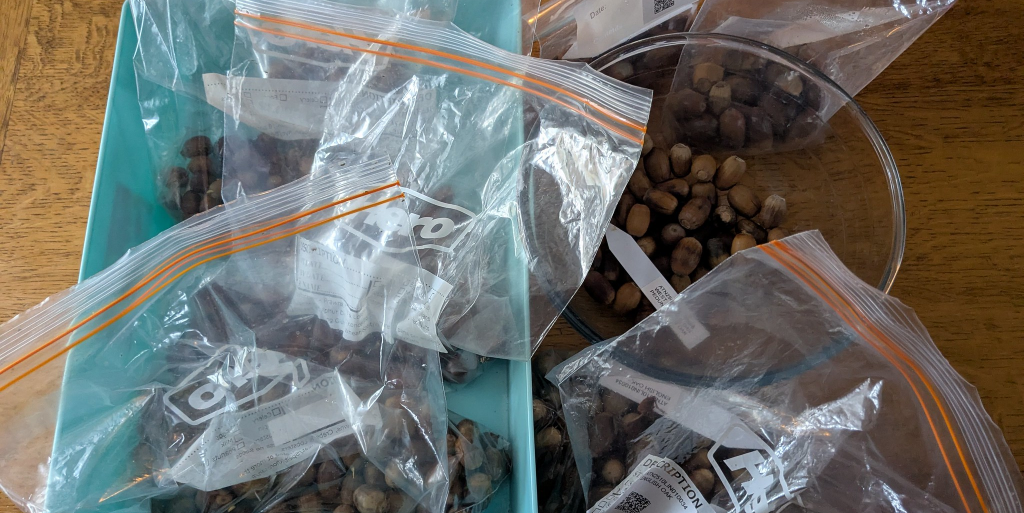Collection of forest genetic materials

For our work to be sustainable it is essential that standards and regulations are fully and properly observed. In addition to the usual guidance around not compromising wildlife through over-collection we are also careful to conduct our work with full legal compliance and landowner approval.
Compliance falls into three broad areas:
Legal
Many sites where ancient trees are found carry legally binding designations, such as Sites of Special Scientific Interest (SSSI). The removal or disturbance of biological materials from these sites is illegal and might constitute an offence, such as under the Wildlife and Countryside Act 1982. For any type of collection to occur, prior written permission must be obtained from the relevant government body, such as Natural England. Further information can be found at:
Plant biosecurity
Best practice to prevent the spread of disease is especially important in relation to ancient and veteran trees. All equipment and footwear should be thoroughly cleaned between visits to trees at different sites. Useful information can be found at the Forest Research web pages.
Landowner approval
Finally, no collections should be made without first securing the explicit permission of the person or organization that owns the trees. This is equally true whether there is public access or not. Finding out who the landowner is can be challenging but it’s all part of the fun!
Best practice in collecting seed
The rules are pretty simple. Nothing should be done that harms the health of the tree, the wildlife it supports, or its surrounding ecology. This means that methods for the collection of seeds should be non-destructive (ideally simply picking up fallen seed from below the tree) and should ensure that sufficient remains for animals that need the seed as food. For more information, see Kew’s Field Manual for Seed Collectors. The information contained in Forestry England’s Seed Collection Protocol should also be observed. Flora Locale also provides a helpful guide.
Provenance zones
Please note that we currently observe the Forestry Commission’s Seed Provenance Zones. All of our trees are identifiable to the individual mother tree, allowing for possible modifications of this policy in the future.

